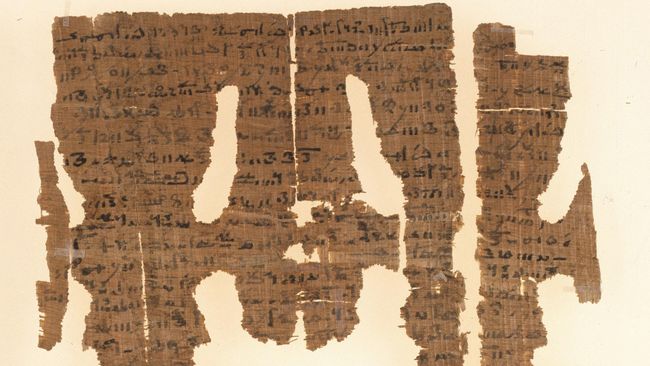https://www.livescience.com/egyptian-erotic-binding-spell.html
Woman seeks man in ancient Egyptian 'erotic binding spell'

Scholars are translating an 1,800-year-old Egyptian papyrus describing what scholars call an "erotic binding spell," in which a woman named Taromeway tries to attract a man named Kephalas.
On the papyrus, a drawing shows the Egyptian jackal-headed god Anubis shooting an arrow into Kephalas, who is depicted nude. The arrow Anubis shoots is intended to inflame Kephalas' lust for Taromeway, researchers say.
The spell is written in Demotic, an Egyptian script, and calls upon a ghost —the "noble spirit of the man of the necropolis" — to find Kephalas and "give to him anxiety at midday, evening, and at all time" until Kephalas seeks Taromeway in lustful desire with "his male organs pursuing her female organs."
"His emphasized penis and scrotum surely are intentional as the 'male organs' she specifically wants to pursue her," said Robert Ritner, an Egyptology professor at the University of Chicago who is translating the spell.The spell makes astronomical allusions, at one point calling upon Kephalas to traverse Ursa Major, a constellation that never sets below the horizon, until he is "wandering after [Taromeway] while there is no other woman on Earth whom he desires, as he madly pursues her."
Other so-called erotic binding spells are known from ancient Egypt, although they were more commonly used by men seeking women, wrote Ritner and Foy Scalf, the head of research archives at the University of Chicago's Oriental Institute. Ritner and Foy described their ongoing translation of the spell in an article that was published recently in the journal Göttinger Miszellen.

Part of an 1,800 year-old papyrus written in Demotic, an Egyptian script, containing what scholars call an "erotic binding spell." Experts are currently creating a full translation of the papyrus. (Image credit: Photo courtesy University of Michigan)
Who were they?
It's unknown why Taromeway wanted Kephalas so badly or whether she actually got him. "Taromeway must have been both motivated and with some disposable means," Ritner told Live Science, noting that Taromeway likely paid an expert, such as a priest, to write the spell.
It's possible that Taromeway and Kephalas were from different ethnic groups. "While she is certainly Egyptian, Kephalas and his mother have Greek names," said Ritner. Ancient Egypt was under Roman control at the time the spell was written; during this time, Egyptians did adopt Greek names, "but it may be the case that Taromeway's sexual fixation on Kephalas crossed ethnic bounds," Ritner said.
Once written, the papyrus was probably placed in a tomb, and the "ghost" invoked in the spell would have been the spirit of the person buried there, said Ritner.
The papyrus, which has not been translated before, is now in the collection of the University of Michigan, which acquired it in November 1924. Records are unclear about which site the papyrus is from, though many of the other papyri that were acquired along with it are from the Fayum area of Egypt, according to previous research.
- The 25 most mysterious archaeological finds on Earth
- 10 of the most mysterious ancient manuscripts
- Photos: Discoveries at Wadi el-Hudi, an ancient Egyptian settlement
Originally published on Live Science.
-- Sent from my Linux system.
No comments:
Post a Comment